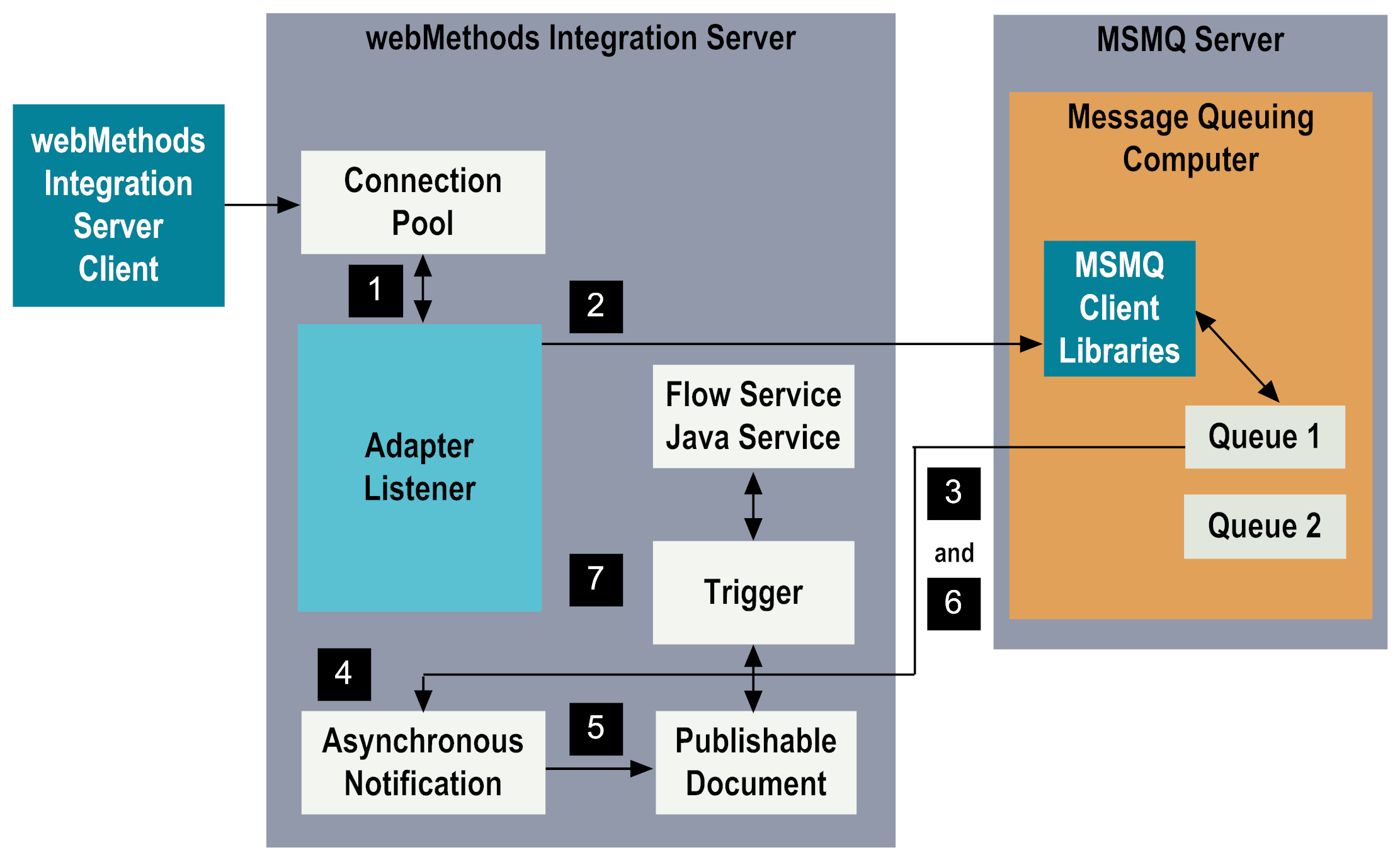

Step | Description |
1 | The listener retrieves a connection from the connection pool associated with the service. |
2 | The listener uses the MSMQ libraries to monitor and listen for messages on a queue. |
3 | When a message appears on the queue, the listener retrieves the message from the queue and passes it to the asynchronous notification. |
4 | The asynchronous notification compares the message property fields against the Filter fields specified for the notification. If all specified criteria matches between the two sets of fields, the asynchronous notification will be invoked to publish the document. If the specified criteria do not match between the message property fields and the Filter fields, the asynchronous notification is not invoked to publish the document. |
5 | The asynchronous notification creates a publishable document, which contains the Body, message properties, and envelope information. The asynchronous notification publishes the document that the service, which you created, processes at a later time. |
6 | The listener gets the next message from the queue, and the MSMQ Adapter repeats steps 1 through 5. |
7 | Using an Integration Server trigger that you configured to use the publishable document created with the notification, a flow or Java service that you configured on Integration Server is invoked to process the message data in the publishable document. |